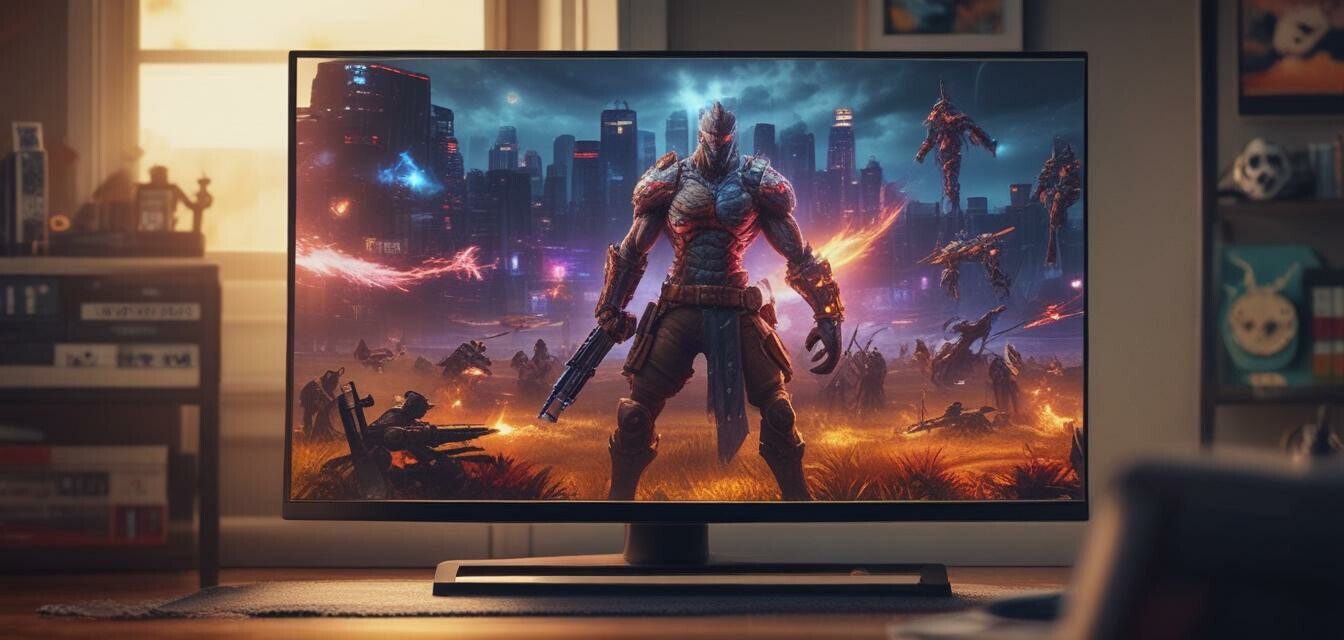
What Gamers Need to Know About Display Latency
Key Takeaways
- Display latency measures the time it takes for a signal to travel from the source to the screen.
- Lower latency enhances gaming performance, reducing the time between user input and visual response.
- Modern TVs offer various features to optimize display latency, including Game Mode and Variable Refresh Rate (VRR).
- Understanding latency can help gamers choose the best displays for responsive gameplay.
- Regular updates and settings adjustments can further improve performance.
Welcome to our comprehensive guide on display latency! For gamers, the responsiveness of their gaming setup can significantly impact the overall experience. Display latency, often a technical term, plays a crucial role in how quickly your actions on the controller or keyboard are reflected on the screen. In this article, we will delve into what display latency is, its significance in gaming, and how gamers can mitigate its effects on their gameplay. Let’s get started!
Understanding display latency
Display latency, also known as input lag, refers to the delay between an action taken on a gaming controller or keyboard and the corresponding image appearing on the screen. This delay can frustrate gamers, particularly in fast-paced games where timing is critical.
How is display latency measured?
The measurement of display latency is typically expressed in milliseconds (ms). The lower the number, the quicker the response time. Here’s a quick overview
| Latency Range (ms) | Experience |
|---|---|
| 0-15 ms | Excellent, minimal perception of lag |
| 16-30 ms | Good, slight lag may be noticeable in fast-paced actions |
| 31-50 ms | Average, noticeable latency can affect gameplay |
| 51 ms and above | Poor, significant input lag |
Why does display latency matter?
The impact of display latency is especially pronounced in competitive gaming. Here are some reasons why it matters:
- Performance: A lower latency allows for quicker reflexes, which is vital in fast-paced games.
- Immersion: Reduced delay enhances the gaming experience, making gameplay feel more seamless.
- Competitiveness: Higher latencies can put players at a disadvantage, especially in multiplayer settings.
Common causes of display latency
Several factors can contribute to high display latency:
- Signal processing: Built-in processing features in TVs can increase latency.
- Resolution and refresh rate: Higher resolutions and refresh rates can sometimes delay processing.
- Cable quality: Poor-quality HDMI cables can lead to signal delays.
How to minimize display latency
Fortunately, there are several strategies gamers can employ to reduce display latency:
- Enable Game Mode on your TV, which usually disables additional processing effects.
- Use high-quality HDMI cables to ensure quick signal transmission.
- Keep firmware updated on your TV and gaming console for the latest performance improvements.
- Consider the resolution and refresh rate settings that communicate optimal performance.
- Consider using a wired connection for your console vs. wireless systems where possible.
Comparison of latency in TV technologies
Understanding the differences in latency among different TV technologies can help you make informed decisions:
| Display Type | Typical Latency (ms) | Pros | Cons |
|---|---|---|---|
| LED/LCD | 15-30 | Widely available and affordable | Higher latency compared to OLED |
| OLED | 5-15 | Superior color accuracy and contrast | Costlier than traditional LEDs |
| QLED | 10-25 | Excellent brightness levels | More expensive with varying latency |
| MicroLED | 1-5 | Exceptional response time | Still in developing stages and very costly |
Display latency and its impact on gaming performance
High display latency can lead to frustrating gaming experiences. In competitive gaming, where every millisecond counts, lag can be a game-changer. It may result in missed shots in first-person shooters or poor timing in rhythm games. Understanding how to assess and improve your display's latency can give you a significant edge over your opponents and enhance your overall gaming experience.
Tips for choosing the best gaming television
When searching for the perfect gaming television, keep the following in mind:
- Look for a low input lag rating, ideally 15 ms or lower.
- Check for features like FreeSync or G-Sync for smoother gameplay.
- Prioritize TVs with strong customer reviews regarding gaming performance.
- Visit our Buying Guides section for in-depth information on selecting a gaming TV.
Conclusion
Understanding display latency is crucial for gamers looking to gain an advantage. By minimizing display latency through various methods and selecting the right technology, gamers can ensure they have the best experience possible. Remember, every millisecond counts in the world of gaming!
For more insights into TV technologies and specifications, visit our Trends in Gaming Televisions section.
Pros
- Improved gaming performance with reduced latency.
- Greater immersion and enjoyment in gameplay.
- Increased competitiveness in fast-paced gaming.
Cons
- Some technologies may come at a higher cost.
- Not all TVs offer optimal gaming features or settings.
- Online modes can contribute to additional latency issues.
